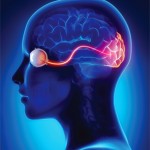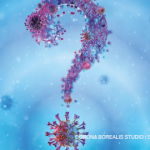“We should not be looking at Choosing Wisely lists as being in specialty silos,” says Dr. Yazdany. “They should be viewed as concerns that physicians will encounter independent of their practice situation. However, it is also important for doctors, patients and the public to realize that these are starting places and should not be viewed as static and unchangeable.”
Choosing Wisely is a way for specialties to weed out tests or other interventions that are widely used but are of dubious value. It should also be viewed as a method for rheumatologists to use the wisdom and experience of others in some of the indirect patient care decisions they make every day.
Kurt Ullman is a freelance writer based in Indiana.
Selected CW Recommendations

American Academy of Allergy, Asthma, and Immunology
- Don’t perform unproven diagnostic tests, such as immunoglobulin G (IgG) testing or an indiscriminate battery of immunoglobulin E (IgE) tests, in the evaluation of allergy.
- Appropriate diagnosis and treatment of allergies require specific IgE testing (either skin or blood tests) based on the patient’s clinical history. The use of other tests or methods to diagnose allergies is unproven and can lead to inappropriate diagnosis and treatment. Appropriate diagnosis and treatment is both cost effective and essential for optimal patient care.
- Don’t recommend replacement immunoglobulin therapy for recurrent infections unless impaired antibody responses to vaccines are demonstrated.
- Immunoglobulin (gammaglobulin) replacement is expensive and does not improve outcomes unless there is impairment of antigen-specific IgG antibody responses to vaccine immunizations or natural infections. Low levels of immunoglobulins (isotypes or subclasses), without impaired antigen-specific IgG antibody responses, do not indicate a need for immunoglobulin replacement therapy. Exceptions include IgG levels <150 mg/dL and genetically defined/suspected disorders. Measurement of IgG subclasses is not routinely useful in determining the need for immunoglobulin therapy. Selective IgA deficiency is not an indication for administration of immunoglobulin.
American Academy of Family Physicians
- Don’t do imaging for low back pain within the first six weeks, unless red flags are present.
- Red flags include, but are not limited to, severe or progressive neurological deficits or when serious underlying conditions such as osteomyelitis are suspected. Imaging of the lower spine before six weeks does not improve outcomes, but does increase costs. Low back pain is the fifth most common reason for all physician visits.
- Don’t use dual-energy X-ray absorptiometry (DEXA) screening for osteoporosis in women younger than 65 or men younger than 70 with no risk factors.
- DEXA is not cost effective in younger, low-risk patients, but is cost effective in older patients.

American Academy of Orthopedic Surgeons
- Don’t use needle lavage to treat patients with symptomatic osteoarthritis of the knee for long-term relief.
- The use of needle lavage in patients with symptomatic osteoarthritis of the knee does not lead to measurable improvements in pain, function, 50-foot walking time, stiffness, tenderness or swelling.
- Don’t use lateral wedge insoles to treat patients with symptomatic medial compartment osteoarthritis of the knee.
- In patients with symptomatic osteoarthritis of the knee, the use of lateral wedge or neutral insoles does not improve pain or functional outcomes. Comparisons between lateral and neutral heel wedges were investigated, as were comparisons between lateral wedged insoles and lateral wedged insoles with subtalar strapping. The systematic review concludes that there is only limited evidence for the effectiveness of lateral heel wedges and related orthoses. In addition, the possibility exists that those who do not use them may experience fewer symptoms from osteoarthritis of the knee.
- Don’t use postoperative splinting of the wrist after carpal tunnel release for long-term relief.
- Routine post-operative splinting of the wrist after the carpal tunnel release procedure showed no benefit in grip or lateral pinch strength or bowstringing. In addition, the research showed no effect in complication rates, subjective outcomes or patient satisfaction. Clinicians may wish to provide protection for the wrist in a working environment or for temporary protection. However, objective criteria for their appropriate use do not exist. Clinicians should be aware of the detrimental effects, including adhesion formation, stiffness and prevention of nerve and tendon movement.
American College of Occupational and Environmental Medicine
- Don’t prescribe opioids for treatment of chronic or acute pain for workers who perform safety-sensitive jobs, such as operating motor vehicles, forklifts, cranes or other heavy equipment.
- The use of both strong and weak opioids has been consistently associated with increased risk of motor vehicle crashes as opioids produce sedation and hinder or impair higher cognitive function. Evidence suggests higher risk with acute opioid use, but risk remains elevated throughout treatment with any opioid and reverses on cessation. Workers who operate motor vehicles/heavy equipment should be precluded from performing these or other safety-sensitive job functions while under treatment with opioids.
- Don’t initially obtain X-rays for injured workers with acute non-specific low back pain.
- X-ray is unnecessary for the initial routine management of low back pain unless red flags are present. Even when red flags are suspected, it should not be mandatory to order an X-ray in all cases. There is also no reason, either medically or legally, to obtain low back X-rays as a “baseline” for work-related injuries.
American College of Physicians
- Don’t obtain imaging studies in patients with non-specific low back pain.
- In patients with back pain that cannot be attributed to a specific disease or spinal abnormality following a history and physical examination (e.g., non-specific low back pain), imaging with plain radiography, computed tomography (CT) scan, or magnetic resonance imaging (MRI) does not improve patient outcomes.
American Geriatrics Society
- Avoid using medications to achieve hemoglobin A1c <7.5% in most adults age 65 and older; moderate control is generally better.
- There is no evidence that using medications to achieve tight glycemic control in older adults with type 2 diabetes is beneficial. Among non-older adults, except for long-term reductions in myocardial infarction and mortality with metformin, using medications to achieve glycated hemoglobin levels less than 7% is associated with harms, including higher mortality rates. Tight control has been consistently shown to produce higher rates of hypoglycemia in older adults. Given the long timeframe to achieve theorized microvascular benefits of tight control, glycemic targets should reflect patient goals, health status, and life expectancy. Reasonable glycemic targets would be 7.0–7.5% in healthy older adults with long life expectancy, 7.5–8.0% in those with moderate comorbidity and a life expectancy <10 years, and 8.0–9.0% in those with multiple morbidities and shorter life expectancy.
- Don’t use benzodiazepines or other sedative-hypnotics in older adults as first choice for insomnia, agitation or delirium.
- Large-scale studies consistently show that the risk of motor vehicle accidents, falls and hip fractures leading to hospitalization and death can more than double in older adults taking benzodiazepines and other sedative-hypnotics. Older patients, their caregivers and their providers should recognize these potential harms when considering treatment strategies for insomnia, agitation or delirium. Use of benzodiazepines should be reserved for alcohol withdrawal symptoms/delirium tremens or severe generalized anxiety disorder unresponsive to other therapies.
American Society of Hematology
- Don’t transfuse more than the minimum number of red blood cell (RBC) units necessary to relieve symptoms of anemia or to return a patient to a safe hemoglobin range (7–8 g/dL in stable, non-cardiac in-patients).
- Transfusion of the smallest effective dose of RBCs is recommended because liberal transfusion strategies do not improve outcomes when compared to restrictive strategies. Unnecessary transfusion generates costs and exposes patients to potential adverse effects without any likelihood of benefit. Clinicians are urged to avoid the routine administration of 2 units of RBCs if 1 unit is sufficient and to use appropriate weight-based dosing of RBCs in children.
North American Spine Society
- Don’t recommend advanced imaging (e.g., MRI) of the spine within the first six weeks in patients with non-specific acute low back pain in the absence of red flags.
- In the absence of red flags, advanced imaging within the first six weeks has not been found to improve outcomes, but does increase costs. Red flags include, but are not limited to: trauma history, unintentional weight loss, immunosuppression, history of cancer, intravenous drug use, steroid use, osteoporosis, age >50, focal neurologic deficit and progression of symptoms.
- Don’t perform elective spinal injections without imaging guidance, unless contraindicated.
- Elective spinal injections, such as epidural steroid injections, should be performed under imaging guidance using fluoroscopy or CT with contrast enhancement (unless contraindicated) to ensure correct placement of the needle and to maximize diagnostic accuracy and therapeutic efficacy. Failure to use appropriate imaging may result in inappropriate placement of the medication, thereby decreasing the efficacy of the procedure and increasing the need for additional care.
- Don’t use electromyography (EMG) and nerve conduction studies (NCS) to determine the cause of axial lumbar, thoracic or cervical spine pain.
- Electromyography and nerve conduction studies are measures of nerve and muscle function. They may be indicated when there is concern for a neurologic injury or disorder, such as the presence of leg or arm pain, numbness or weakness associated with compression of a spinal nerve. As spinal nerve injury is not a cause of neck, mid back or low back pain, EMG/NCS have not been found to be helpful in diagnosing the underlying causes of axial lumbar, thoracic and cervical spine pain.
- Don’t recommend bed rest for more than 48 hours when treating low back pain.
- In patients with low back pain, bed rest exceeding 48 hours in duration has not been shown to be of benefit.
For the complete list of recommendations, visit http://www.choosingwisely.org/doctor-patient-lists.



